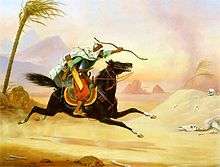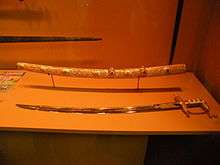Furusiyya

Furūsiyya ( فروسية) is the historical Arabic term for knightly martial exercise during the Middle Ages, during the Crusades and Mamluk period in particular, especially concerned with the martial arts and equestrianism of the Golden Age of Islam. The body of Arabo-Persian "Furūsiyya literature" includes the genre Faras-nāma, which is an encyclopedic compilation of facts relating to horses.
It was a concept and noble art that included the arts of war and hunting, equestrianism, tactics and strategy, and certain games like chess. This art was practiced throughout the Muslim world, and saw its greatest achievement in Mamluk Egypt during the 14th century. It was part of a larger regional phenomenon of Western Eurasia that included European knighthood of the time.
The term is a derivation of faras (a horse), and in modern Standard Arabic means "equestrianism" in general. The term for "horseman" or "knight" is fāris, which is also the origin of the Spanish rank of Alférez.
Disciplines of furusiyya
The three basic categories of furūsiyya are horsemanship (including veterinary aspects of proper care for the horse, the proper riding techniques), archery, and charging with the lance. Ibn Qayyim al-Jawziyya adds swordsmanship as a fourth discipline in his treatise Al-Furūsiyya (ca. 1350).[1]
In a narrow sense of the term, furūsiyya literature comprises works by professional military writers with a Mamluk background or close ties to the Mamluk establishment. These treatises often quote pre-Mamluk works on military strategy. Some of these works were versified for didactic purposes. The best known of these versified treatises is the one by Taybugha al-Baklamishi al-Yunani ("the Greek"), who in ca. 1368 wrote the poem al-tullab fi ma'rifat ramy al-nushshab.[2]
Furusiyya as an ethical code

However, furūsiyya also appears to have retained a wider meaning of "the continuing ethos of manly endeavor of early Islam", comparable to the contemporary European notion of chivalry. Islamic furussiya and European chivalry has both influenced each other as a means of a warrior code for the knights of both cultures.[3][4]
The faris or "knight" (whether free like Usama ibn Munqidh or unfree professional warriors like ghulams and mamluks) was trained in the use of various weapons such as the saif (sword), spear, lance, javelin, club, bow and arrows, and tabarzin or axe (hence Mamluk body-guards known as tabardariyya) They were also trained in wrestling, and their martial art skills were to be honed first on foot and then perfected when mounted.[5]
See also
References
- ↑ "Arab epic heroes and horses". Halle an der Saale: 29. Deutscher Orientalistentag. Archived from the original on July 18, 2011.
Furusiyya covers four disciplines: the tactics of attack and withdrawal (al-karr wa-l-farr); archery; jousts with spears; duels with swords. [...] Only the Muslim conquerors and the knights of the faith have fully mastered these four arts.
- ↑ ed. and trans. Latham and Paterson, London 1970
- ↑ Hermes, Nizar (December 4, 2007). "King Arthur in the Lands of the Saracen" (PDF). Nebula.
- ↑ Burton, Richard Francis (1884). Read, Charles Anderson; O'Connor, Thomas Power, eds. The cabinet of Irish literature: selections from the works of the chief poets, orators, and prose writers of Ireland, with biographical sketches and literary notices, Vol. IV. London; New York: Blackie & Son; Samuel L. Hall. p. 94.
Were it not evident that the spiritualising of sexuality by imagination is universal among the highest orders of mankind, I should attribute the origin of love to the influence of the Arabs' poetry and chicalry upon European ideas rather than to medieval Christianity.
- ↑ Nicolle, David (1994). Saracen Faris AD 1050–1250 (Warrior). Osprey Publishing. pp. 8–9. ISBN 978-1-85532-453-4.
Further reading
- Ayalon, David (1961). Notes on the Furusiyya Exercises and Games in the Mamluk Sultanate, Scripta Hierosolymitana, 9
- Bashir, Mohamed (2008). The arts of the Muslim knight; the Furusiyya Art Foundation collection. Skira. ISBN 978-88-7624-877-1
- Haarmann, Ulrich (1998), "The late triumph of the Persian bow: critical voices on the Mamluk monopoly on weaponry", The Mamluks in Egyptian politics and society, Cambridge University Press, pp. 174–187, ISBN 978-0-521-59115-7
- Nicolle, David (1999). Arms & Armour of the Crusading Era 1050–1350, Islam, Eastern Europe, and Asia. Greenhill Books. ISBN 978-1-85367-369-6
- al-Sarraf, Shibab (2004), "Mamluk Furūsīyah Literature and Its Antecedents" (PDF), Mamlūk Studies Review, 8 (1): 141–201, ISSN 1086-170X
- Waterson, James (2007). The Knights of Islam: The Wars of the Mamluks. Greenhill Books. ISBN 978-1-85367-734-2
External links
| Look up فارس in Wiktionary, the free dictionary. |
| Look up فروسية in Wiktionary, the free dictionary. |
- Furusiyya: origins of a knightly code (Al-Ahram)
- Pencak Silat Sharaf Furusiya is part of the internal training of Muslim Martial Arts (PSSI)
